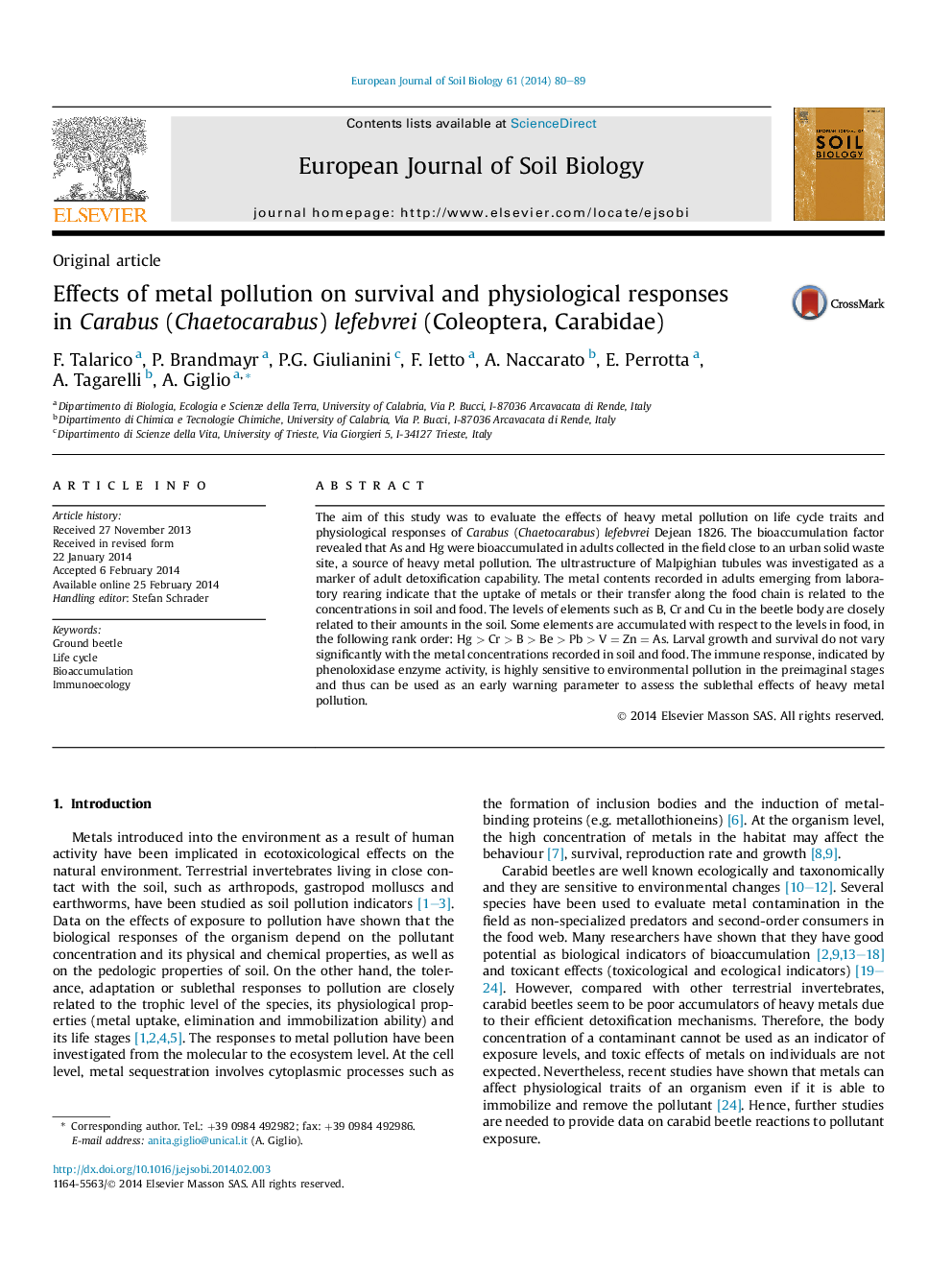| Article ID | Journal | Published Year | Pages | File Type |
|---|---|---|---|---|
| 4391886 | European Journal of Soil Biology | 2014 | 10 Pages |
•Adults of Carabus lefebvrei concentrate and remove heavy metal by Malpighian tubules.•The bioaccumulation is related to the metal concentration in soil and food.•Heavy metals don't affect on survival and developmental time of the species.•Metal pollution can affect on phenoloxidase enzyme activity of the preimaginal stages.
The aim of this study was to evaluate the effects of heavy metal pollution on life cycle traits and physiological responses of Carabus (Chaetocarabus) lefebvrei Dejean 1826. The bioaccumulation factor revealed that As and Hg were bioaccumulated in adults collected in the field close to an urban solid waste site, a source of heavy metal pollution. The ultrastructure of Malpighian tubules was investigated as a marker of adult detoxification capability. The metal contents recorded in adults emerging from laboratory rearing indicate that the uptake of metals or their transfer along the food chain is related to the concentrations in soil and food. The levels of elements such as B, Cr and Cu in the beetle body are closely related to their amounts in the soil. Some elements are accumulated with respect to the levels in food, in the following rank order: Hg > Cr > B > Be > Pb > V = Zn = As. Larval growth and survival do not vary significantly with the metal concentrations recorded in soil and food. The immune response, indicated by phenoloxidase enzyme activity, is highly sensitive to environmental pollution in the preimaginal stages and thus can be used as an early warning parameter to assess the sublethal effects of heavy metal pollution.
